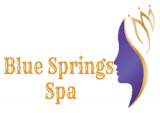Whatever the finish of your kitchen (melamine, laminate, polymer, wood), you can safely clean your kitchen with a sponge or a soft cloth soaked in water or soapy water. Be careful, however, to wring your cloth well so that it is not soggy. The Swedish dishcloths come up as quite useful there.
On the other hand, it is strongly recommended not to use abrasive sponges (scouring sponges, steel wool, etc.) or aggressive cleaning agents (scouring powder, solvents, bleach, ammonia, polishing agents, wax, and bleaching agents). , products containing acid salts.
Dust wipes are to be avoided according to the materials. This creates static energy that facilitates the reappearance of dust. Also, beware of the use of steam cleaners that are too aggressive.
Some maintenance tips for each:
kitchen finish:
melamine
Use a glass cleaner for the most stubborn tasks.
Laminate
Since the laminate is stronger than melamine, it is possible to use alcohol or alcohol vinegar if a task persists.
Glossy laminate
Be careful, the glossy laminate is slightly more sensitive to scratches. Care should be taken to use a sponge or a soft cloth to clean these surfaces.
Matte laminate
In the case of micro-scratches, you can restore the material of your worktop or your facades, with a simple sponge melamine foam (also called “magic sponge”).
Care of the mat laminate with a melamine foam sponge
Polymer
Avoid cleaning your polymer doors and drawers with a dry cloth or dust cloth as this creates static electricity which attracts dust. Always prefer a damp cloth, the dust will come back … but less quickly!
Lacquer
Lacquer is very sensitive to scratches. Take care that your cloth does not contain abrasive particles or residues. For safe cleaning, you can use a chamois leather to clean your facades.
Wood
- Avoid fluffy rags that cling easily to the natural wood grain.
- In any case, avoid rough cloths, scraping sponges and cleaning products that are too aggressive, otherwise the surface of your furniture will be damaged!
- We often neglect to clean our sponges while we use them daily. Here are 5 effective tips for sanitizing and disinfecting them.
- Just like our house, our sponges also need to be disinfected so as not to further contaminate what they are supposed to clean. To prevent the proliferation of all kinds of bacteria such as E. Coli, Staphylococci and Salmonella, it is important to frequently clean them before using them.
Now Washing the Sponge
1. Alcohol At 90 ° C
It is an excellent antiseptic and disinfectant. In a small bowl, pour on your sponge, a quarter of alcohol at least 70 ° C, three quarters of water and five drops of lemon essential oil. Let stand for two minutes and rinse under running water.
2. Baking Soda
It stops the production and spread of pathogenic fungi. In a salad bowl, pour half a liter of hot water and two tablespoons of baking soda. Mix well and let stand for 30 minutes. Rinse under running water.

3. The Lemon
It eliminates germs from all surfaces and deodorizes. Boil in a saucepan, water with lemon juice and a liter of water for a juice of a lemon. Plunge your sponge in for a minute, take it out and rinse it under running water.


